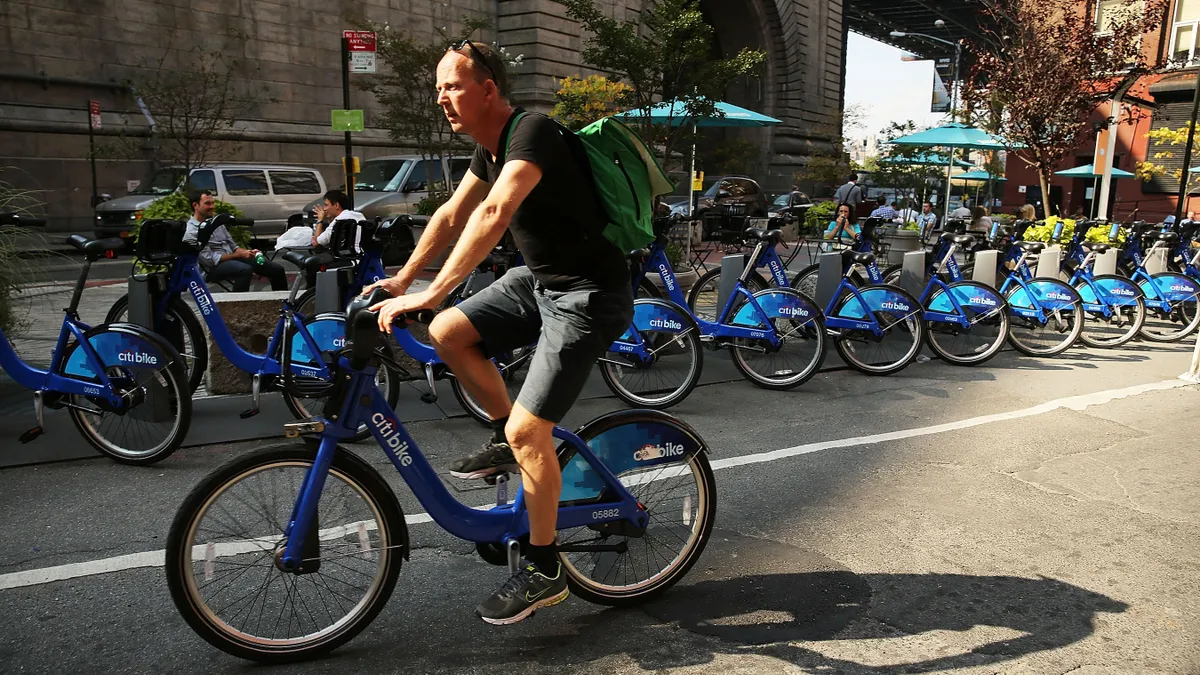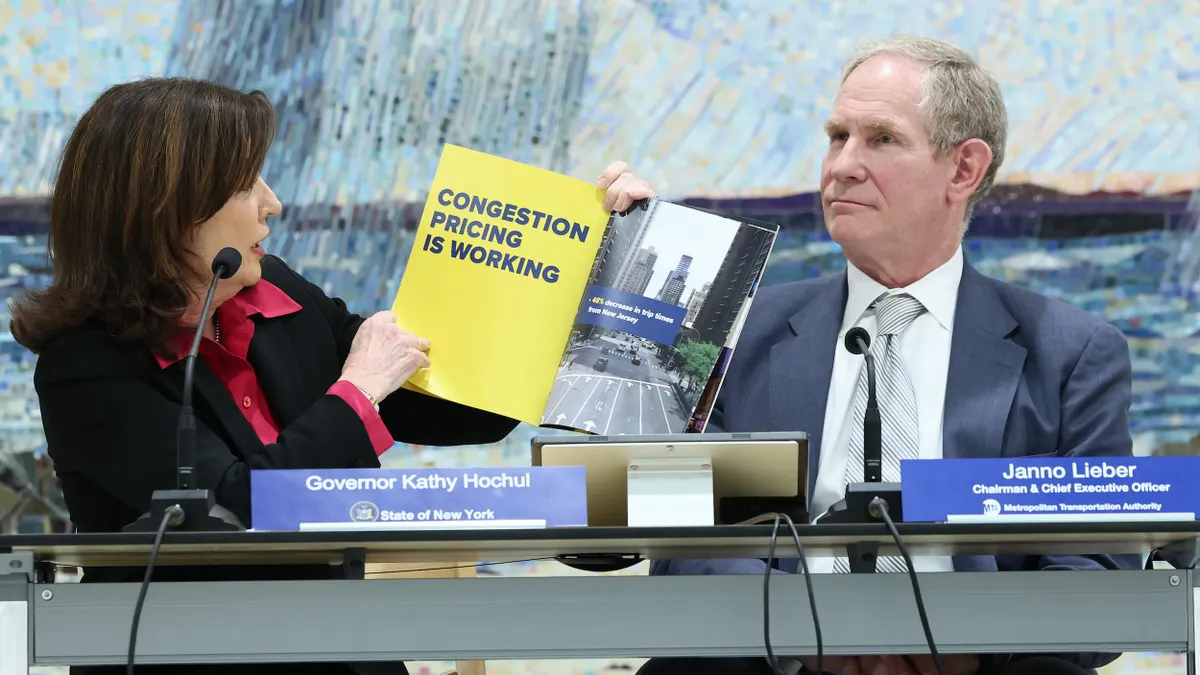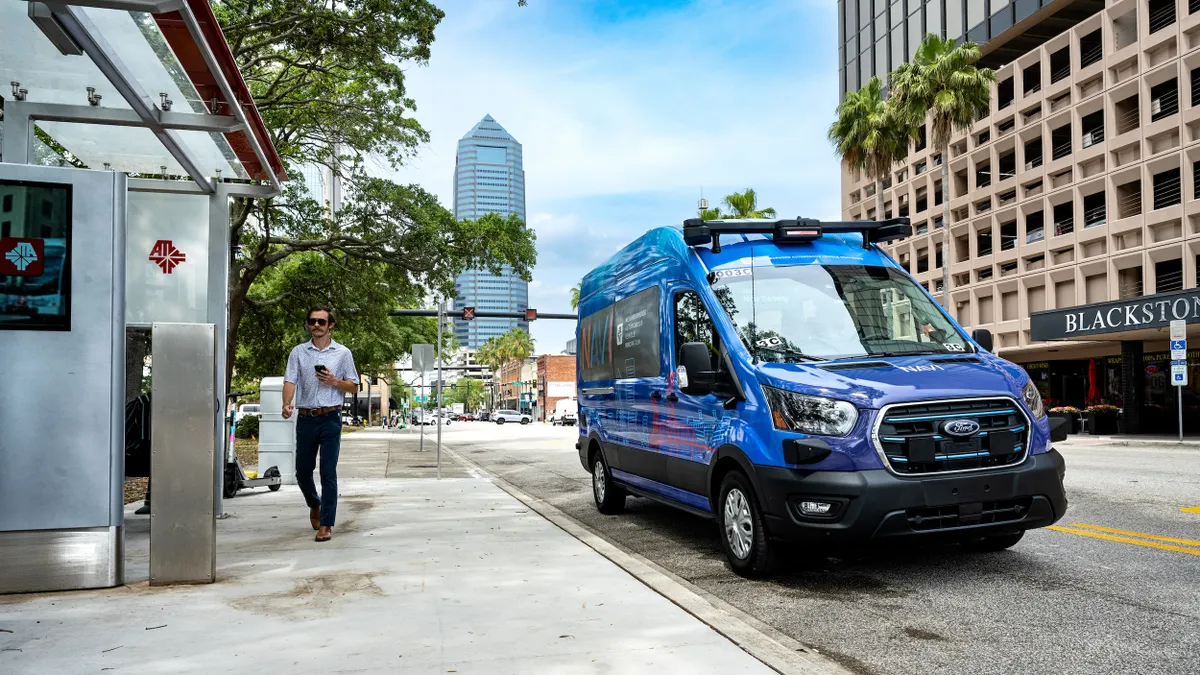Editor's Note: This post was written by Kaushik Rajashekara, a lecturer for the IEEE Transportation Electrification Community. The opinions represented in this piece are independent of Smart Cities Dive's views.
Few things sound as far-fetched as flying cars, but the first one actually took off exactly one century ago. And thanks to a host of technological advances, flying cars are now more viable than ever — just in time to become a new transportation option for smart cities and rural areas alike.
Aviation pioneer Glenn Curtiss built the first flying car in 1917: the Autoplane, which mustered short hops rather than true flight. The next milestone came two decades later from Waldo Waterman, considered the father of America’s flying automobiles. His Arrowbile cruised the air at 125 mph and the ground at 70 mph.
By 1970, flying cars had evolved enough that Ford Motor Co. considered selling one: the Aerocar, which had a 300-mile range and cruised at 120 mph. Although the U.S. Federal Aviation Administration approved the Aerocar, the oil crisis scuttled Ford’s plans to start producing it.
The Autoplane, Arrowbile and Aerocar were like airplanes in the sense that they required some sort of runway to take off, which obviously limits their potential in urban and suburban areas. Hence the appeal of flying cars that have a vertical takeoff and landing (VTOL) design, which enables them to rise up from or descend onto a small area such as a driveway or parking garage roof.
Many military aircraft are VTOL, so it’s a mature, proven design that flying car manufacturers and their customers can leverage with confidence. Moller International developed the first personal VTOL vehicle in 1966. Its latest model, the Skycar 400, is noteworthy because it is FAA compliant (not FAA approved) to classify it as a light sport aviation vehicle, sparing people from the expense and time of getting a pilot’s license.
Leveraging the aircraft and hybrid/electric vehicle markets
Besides VTOL and other aviation technology, flying cars also can leverage a lot of the R&D work for electric vehicles and autonomous vehicles. For example, automakers and their suppliers are steadily increasing battery capacity while reducing their weight. Flying cars can adopt and adapt those innovations to increase their range and the amount of passengers and cargo they can carry.
A second, less obvious example is automakers’ and aerospace manufacturers’ advances in high-density power electronics and high-density electric motors, which they’ve been developing for their electric and hybrid vehicles and aircraft. These technologies are just as important as lighter, higher capacity batteries when it comes to transforming flying cars from a niche play to a mainstream transportation option. The aircraft and electric/hybrid vehicle markets also are large, which means flying cars have access to a bigger, global cost structure than if their industry was developing and manufacturing these technologies by itself.
Flying cars that are hybrid or entirely battery powered also can leverage the charging infrastructure that’s being deployed for their vehicular counterparts. One early example is Terrafugia’s TF-X (which is still in development), a VTOL with a 500-mile range that can recharge its batteries either from its engine or at electric car charging stations.
Another major automotive trend is vehicle-to-vehicle and vehicle-to-infrastructure (V2V/V2I) communications to enable autonomous driving and collision avoidance. Flying cars can leverage these technologies, too, to help address customer and regulator concerns about collisions due to the skies being filled with millions of amateur pilots. Minimizing that concern — among customers and regulators — also is key for transforming flying cars into a mainstream transportation option. It’s particularly important for encouraging usage, including by taxi and ride-sharing services, to alleviate road congestion in cities.
Transforming cities and societies
Many of the world’s most traffic-jammed cities are in developing countries. Flying cars could transform their economies and environments by providing endless alternative routes. For example, those cities would have to spend less on roads and bridges, freeing up money for other programs. They also would have less of the socioeconomic and health problems that come with gridlock-induced pollution and neighborhood cut off from one another by highways.
In that respect, developing countries could experience a phenomenon like they did with telecom. Twenty years ago, nearly every home in developed countries had a landline, but they were an expensive rarity in developing countries. Then cellular technology reached a tipping point in global adoption where the cost of mobile phones and their network infrastructure started to plummet, making them a much more viable communications option in developing countries. It’s likely that flying cars eventually will reach a similar tipping point and have the same transformative effect on developing societies.
A major reason why cars are such a fundamental part of today’s world is because a handful of visionary people pioneered them. The Henry Fords and Walter Chryslers of flying cars could turn out to be Internet pioneers such as Larry Page, who’s reportedly invested $100 million so far. “We’ve all had dreams of flying effortlessly,” he said in April. “I’m excited that one day very soon I’ll be able to climb onto my Kitty Hawk Flyer for a quick and easy personal flight.”
Another example is Uber, whose Elevate initiative aims to pioneer flight sharing and shake up transportation again. Working with cities such as Dallas and Dubai, Uber aims to demo its first flying car service by 2020 — one more reason why flying cars aren’t as far-fetched as they might seem.

















